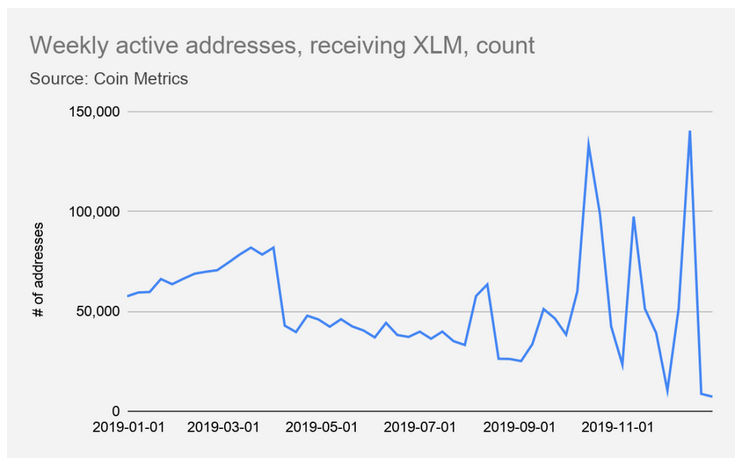Stellar’s inflation process dispersed only $41K XLMs for project development

The rate of issuance and a consistent supply of coins or tokens is imperative to the maintenance of any digital asset’s economic value. As every blockchain has its own process of issuing new coins, concerns about inflation arise when new supply is issued and it decreases the value of the rest of the supply, unless an equal amount is also burnt.
Stellar’s network has a unique built-in inflation system, one wherein XLMs are created and distributed at the rate of 1% per year.
Coinmetrics’ recent State of the Network report discussed the end of the SDF’s monetary inflation process for 2019 and expanded on the eventual termination of the system and its impact on Stellar’s on-chain metrics.
When the inflation process was initially developed, it was supposed to help the development and growth of the Stellar ecosystem. However, the new supply was being claimed by individuals who were not actively working on any projects. The post stated,
“This primarily happened through the creation of inflation pools, which allowed individuals to pool their resources together to pass the 0.05% supply threshold to qualify for receiving an inflation payout.”
The inflation process ran its course for roughly 4 years from October 2015 to October 2019, and it was reported that the active participants who were the recipients of the inflation supply included SDF addresses, exchange addresses, inflation pool addresses, and unknown addresses.
Inflation pools became a way for collective users to benefit from the process as they would designate the pool address as their inflation destination and receive XLM tokens on a weekly basis. Exchanges like Binance and Poloniex also indulged in the process and distributed their proceeds to its XLM balance holders on their platforms.
The report claimed that a total of 1,087,306 addresses were identified as an inflation destination, a figure which was equivalent to only 18.3 percent of the accounts created before the end of the inflation process.

Source: Coinmetrics
Observing the chart above, it can be suggested that in spite of numerous accounts being designated as inflation destinations, only thousands got to reap the benefits of the inflation process.
The report also highlighted a token flow chart between the participants who witnessed SDF taking over a majority (98%) of the inflation payouts. The clear explanation for such a dominant payout was down to the factor that the SDF controlled 80 percent of the supply and ended up designating itself as an inflation destination.
The principal amount that went for the development projects was only about 834K XLMs, which was equivalent to $41,000, at current prices. It is important to note that the primary objective of the inflation payout was to promote the growth of these projects in the ecosystem. The inefficiency was identified as the post added,
“Furthermore, since 98% of the newly created money went to the SDF despite it controlling 80% of the total supply, the inflation process arguably worsened inequities.”

Source: Coinmetrics
After the inflation process was finally phased out in October 2019, the effects on its on-chain metrics were noticeable. The weekly spikes in addresses dropped as the addresses receiving XLM on a weekly basis stopped.
After the inflation process came to an end, SDF burned 5 billion XLM from its operating fund and 50 billion XLM from its funds kept aside for distribution. The supply was brought down to 50 billion XLM, out of which 20 billion XLM is at present, outside of SDF control.
SDF’s unsuccessful inflation process identified key issues for any blockchain system trying to implement an economic infrastructure, without accounting for the ‘idiosyncrasies’ of a network.






